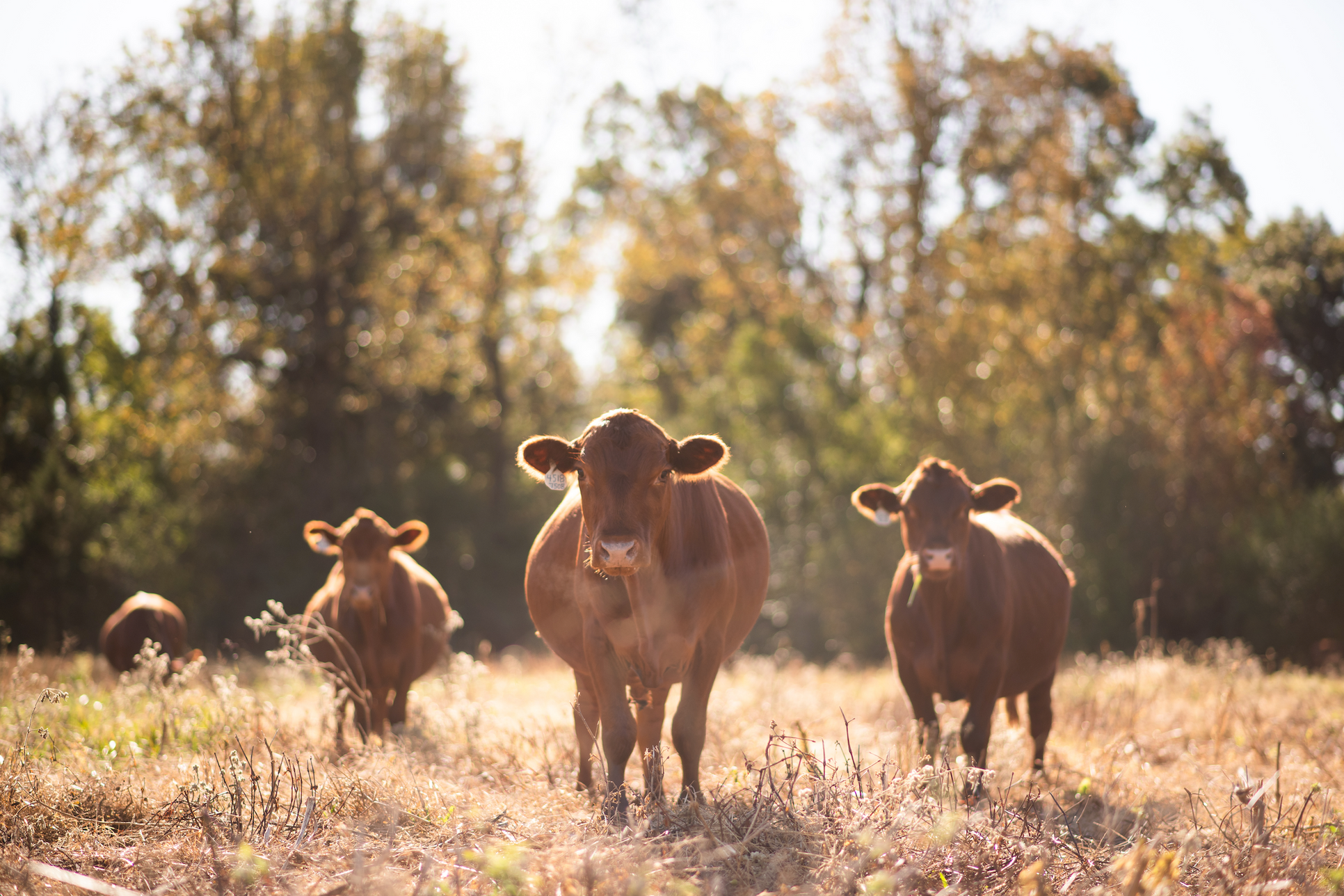Grass-Fed Grass-Finished Beef: What Does it Mean?

We’re often asked, “What does grass fed and grass finished mean?”.
With all the testing we’ve done recently around the levels of nutrition in our meat, we felt it was a good time to discuss this topic further.
What is the difference between grass-fed and grass-finished beef?
Labels can be confusing across meat producers. For example, meat can legally be labeled as ‘grass fed beef’ even if it comes from animals that lived confined in feedlots where they ate grain for most of their lives and were grain finished.
As long as cattle are fed grass at any point in their life, a meat producer is within their legal rights to label that meat as ‘grass fed beef’. Almost all cattle on conventional feed lots are fed grain in order to fatten the animals quickly, thereby rushing their natural development process.
This is where the term ‘grass finished’ enters the picture…
Grass finished assures you that the beef you’re about to purchase was sourced from cattle that ate grass for their entire life, right up to the point of being harvested.
All Grass Roots cattle are 100% grass-fed and grass-finished, which means they spend their lives eating grass and nothing else. No grain or grain by-products. No antibiotics or added hormones. Just grass.
Our cattle are pasture raised on non-GMO grasses that they can freely graze on grass and forage in the fresh air and sunlight, according to their own natural feeding instincts. This leads to healthy and happy animals that have high levels of important nutrients that then get passed on to you when you consume that meat.
Is grass-fed, grass-finished beef good for you?
Grass-fed and grass-finished beef is the only kind that contains conjugated linoleic acid, which has been shown to help prevent weight gain. This kind of beef also has more antioxidants like Vitamin E and Vitamin K2, which are vital for getting calcium into your bones and away from your arteries where it can cause plaques and heart attacks.
In addition, all grass-fed and finished beef has better levels of good fats and a healthy ratio of Omega 3 to Omega 6. Part of the nutrient testing we did this year focused on our grass-fed and grass-finished beef. As expected, our results align with the existing data. Our 90% lean grass-fed ground beef had 200mg of total Omega 3 per 100g serving compared to 36mg for conventional beef.
Why is this important to you? Omega 3 fatty acids are something most of us are deficient in. The typical modern diet is lacking in Omega 3, which is vital for so many aspects of our health: brain development both during pregnancy and childhood, and brain health in later life, eye health and a reduced risk of both metabolic disorders and heart disease.
The interesting thing about these Omega 3 levels is that they are directly tied to grass feeding.
Cows are ruminants and have a tendency to have lower polyunsaturated fatty acids, including Omega 3. As a result, Omega 3 levels in conventional beef tend to be very low and non-existent for long chain Omega 3 like EPA and DHA. A diet rich in Omega 3-rich grasses increases the cattle’s Omega 3 levels over time. This is why we strongly recommend:
Watch your labels. If it isn’t grass-fed AND grass-finished, much of the health benefits just aren’t there.
Is grass-fed and grass-finished beef better for the environment?
Meat operations that graze their pastures 24/7 often face environmental challenges like diminished soil quality and destabilization of natural waterways. This is one of the reasons why Grass Roots is committed to regenerative farming.
Regenerative principles foster a diversity of plants, use no-till methods, and incorporate grazing animals to restore the soil and respect the animals. Our farms and processing facilities maintain the highest standards and provide economic opportunities in rural communities.
Where does Grass Roots get its beef from?
Grass Roots Farmers Co-op is a collection of farms spread across our great nation. 100% of our cattle are born, raised, and harvested in the USA. Some people see moral and socioeconomic implications in supporting the local U.S. economy. We love that. Also, we believe that sourcing beef from US-owned and operated farmers is an important purchasing decision because it eliminates the additional carbon output associated with importing beef from other countries.
Where can I buy grass-fed, grass-finished beef?
As consumers get better informed, demand for grass-fed and grass-finished beef products is rising. However, grass-fed beef is still far more widely available than grass-finished beef, for all the reasons we mentioned above.
It’s fairly common for supermarkets to only carry a single cut like New York Strip Steak or ground beef that’s both grass fed and grass finished. This creates limitations on the range of culinary options available at your dinner table.
Even if your local store does offer a wide variety of beef cuts that are both grass fed and grass finished, there are additional factors that verify the overall quality, nutritional value, and ethical standards of the meat you’re consuming, so we’d recommend also looking for a meat source that:
- Raise all cattle on non-GMO pasture
- Pay farmers a living wage and ensure safe working conditions
- Practice regenerative agriculture, ensuring responsible animal and land stewardship
- All meat is flash frozen at peak freshness for the best flavor
- And it’s a nice-to-have convenience if they deliver your favorite cuts right to your doorstep.
All of the items on the list above describe the quality of meat we offer here at Grass Roots.
We’re committed to maintaining bio-diverse farms that ethically raise and harvest animals that were allowed to live in their natural habitat, according to the instinctive behavioral patterns. We believe that taking good care of the land and the animals grazing on it also takes good care of us humans.
Explore our best selling cuts.


